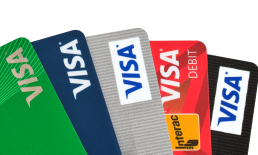Any FinTech operating in the procure-to-pay, vendor payments and accounts payable (AP) spaces can’t deny the fact that paper checks are a headache. But they also can’t deny that checks continue to make up about half of the supplier payments volume (in the U.S., at least).
This creates an interesting predicament for B2B payments disruptors: Should technology be used to make paper checks less friction-filled, or should it be used to entice businesses away from the paper check altogether?
Paymerang CEO Nasser Chanda falls in the former category.
“We’re not a company trying to move in any particular direction that is unkind to vendors,” he recently told PYMNTS in a chat following last week’s announcement that the vendor payments company raised $26 million in funding.
“The market should have a choice,” he said. “It will take time for checks to be eliminated, and there are vendors who prefer it. Frankly, we think checks will be around for many years. If players like us were to drive a market correction, things would fall between the cracks, and clients would have to pick up that extra work.”
With paper checks, of course, AP and accounts receivable (AR) professionals already have extra work in terms of manual data entry, reconciliation, fraud prevention and more. Indeed, research released in 2016 from Bottomline Technologies found 71 percent of businesses surveyed had experienced actual or attempted check fraud.
Advertisement: Scroll to Continue
Chanda explained Paymerang’s role is to handle that extra work for clients, including risk mitigation and data digitization.
“What could happen is a check is sent to a vendor that only wants to receive checks, and something goes wrong — maybe it goes to the wrong department,” he said. “We track it down, we get it to the right department, we follow up and ask, ‘Why haven’t you cashed this?’”
One of the most common complaints of the paper check is that it takes a long time to be sent to the vendor, which then takes more time to cash it. But with an intermediary FinTech facilitating these transactions, Chanda said his customers are less inclined to delay vendor payments, while the transaction itself is less likely to include errors because the payer has handed off the payment process to a specialist.
Forcing companies to shift to other payment rails is no silver bullet, the CEO added, considering they, too, come with their own issues when payments are handled in-house.
“ACH payments are subject to NACHA rules and require you to store bank information for payees,” he said. “Companies that do this in-house tend to store that data in their ERP systems – not a very smart way to manage data there, as it is subject to potential breaches or phishing attacks.”
Just as check fraud topped the list of threats against the enterprise, 70 percent of companies surveyed by IBM Security said they have also been targeted by a phishing attack, which often involves an ACH or wire transaction.
Card payments, meanwhile, are also subject to fraud as payers often email or phone in card details.
Again, a third-party intermediary to handle the security and efficiency issues with an array of B2B payment rails means much of this friction disappears for both vendor and buyer. In addition to facilitating check and eCheck payments, Paymerang also handles virtual card payments and ACH transactions (and the administrative work that comes along with them).
Variety is important, Chanda said, as is making sure a service provider is able to meet the needs of both sides of the transaction.
“Vendor relationships are the lifeblood of our clients’ operations,” he said. “We never want to get into a situation where we are strong-arming a vendor to accept a certain payment method. Typically, vendors understand their customers want to shift to electronic payments. We determine whether suppliers accept cards, and if they don’t, then we make payments another way.”
“It’s not worth it to disrupt the relationship long-term,” he added.
Meeting in the middle to choose a payment rail that works for both sides can enhance the buyer-supplier relationship, Chanda added, noting that when suppliers recognize the value of getting paid faster, they’re more likely to agree to accept card or ACH transactions.
“The key benefit to the virtual card is you get your payment in a fast, secure manner,” he said. “It’s a mode of payments that more vendors are accepting and want to be a part of because it helps their revenue growth. They certainly don’t want to close off avenues of revenue generation. Plus, you get good data and remittance information.”
Offering value for both ends of a B2B payment could help address the rising issue of late supplier payments too. According to Chanda, Paymerang customers typically don’t wait until the last minute to pay their suppliers. There may be a connection, he said, between a company deciding to work with a third-party service provider instead of handling supplier payments in-house, and a reduction in delayed payment behavior.
“We don’t really see our customers holding on to their payments until the last minute,” he said. “One of the reasons why is that we’re in the middle of them and their vendors.”
Addressing B2B payments friction — regardless of payment rail — means transactions can flow more seamlessly and companies on both ends can find a payment mechanism they like — even if that includes the dreaded paper check.
“Checks are, in large part, paid on time,” said Chanda. “We don’t want to use a big hammer to hit a small nail. In other words, if there is a problem, you should address it with a solution for that problem — not apply it for all other payments that are working just fine.
“We support vendor choice,” he continued. “When clients experience the speed and other benefits of electronic payments, they tend to convert over on their terms.”




